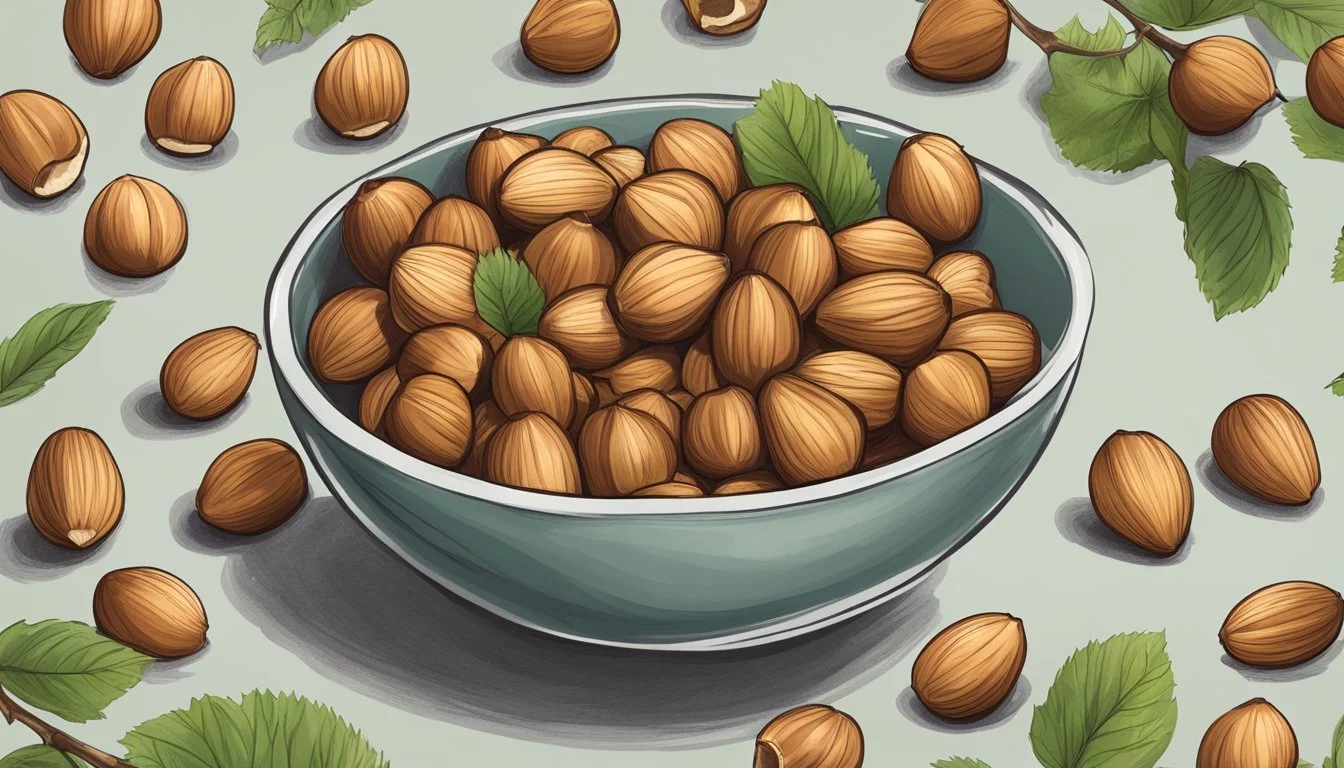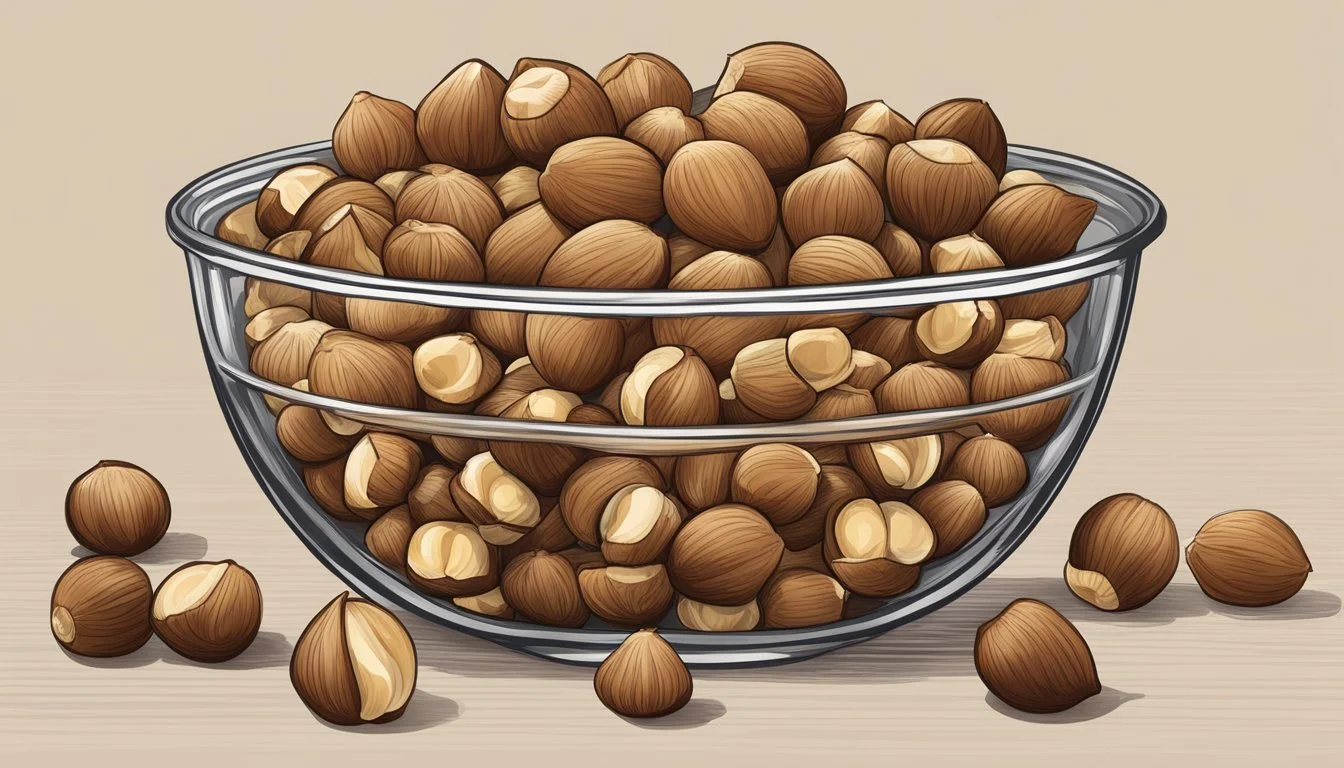How Many Cups in a Pound of Hazelnuts
Accurate Conversion Guide
When cooking or baking with hazelnuts, it's often necessary to know how to convert weight to volume. Hazelnuts are commonly sold by weight, but many recipes will call for a volume measurement, such as cups. Consequently, understanding the conversion rate between the weight of hazelnuts and the corresponding volume is a valuable skill for any chef or home cook.
The conversion from pounds to cups for hazelnuts is as follows: one pound of whole hazelnuts approximately equals 3.49 US cups. This conversion is based on the assumption that the hazelnuts are whole and shelled. It's important to note that the conversion could vary slightly depending on the size, density, and if the nuts (What wine goes well with nuts?) are chopped, as different preparations of hazelnuts may occupy more or less space in a measuring cup.
For precise recipe requirements, using a kitchen scale to measure by weight is advisable. A kitchen scale can provide an accurate measurement for the correct amount of hazelnuts needed, ensuring the best possible result for the dish being prepared. Additionally, chefs and bakers should consider the freshness and specific variety of hazelnuts they are using, as these factors might also influence the overall taste and texture of the final product.
Understanding Measurements
When converting hazelnuts from pounds to cups, one must understand the nuances of volume-to-weight ratios and how various factors affect these measurements.
Variances in Nut Volume
Whole hazelnuts vary in size, which can affect the volume-to-weight conversion. The volume of one pound of whole hazelnuts is approximately 3.49 US cups. Chopped hazelnuts, due to decreased air spaces between the pieces, might present different measurements, typically resulting in a greater number of cups per pound than whole hazelnuts. For instance, one cup of chopped hazelnuts is roughly 130 grams (4.6 ounces), emphasizing the impact of nut preparation on volume.
Weight vs. Volume
Weight (in pounds or grams) and volume (in cups or volume units) are different measuring units, each crucial for accurate recipe outcomes. A converter is often used to move between these units:
1 lb of whole hazelnuts = 3.49 US cups
1 lb of whole shelled hazelnuts = 3.78 US cups
These conversions apply to the standard weight of a pound (16 ounces), showing that weight is a more consistent unit for measuring ingredients than volume, which can be influenced by factors like the size and whether the hazelnuts are whole, chopped, or ground.
Hazelnut Conversions
Converting hazelnuts from one unit of measurement to another is essential in cooking and baking to achieve accurate ingredient proportions. Using precise conversions ensures the correct weight and volume of this ingredient in recipes.
Cups to Pounds
1 pound of whole shelled hazelnuts is approximately equivalent to 3.49 US cups.
Example Conversion Table:
Weight (Pounds) Volume (Cups) 0.1 0.378 0.5 1.89 1.0 3.49
For partial pounds, it's useful to know that:
0.5 pounds of hazelnuts equals about 1.89 US cups.
Grams to Ounces
Metric conversions are also common in recipes.
1 cup of chopped hazelnuts typically weighs 130 grams or 4.6 ounces.
Conversion Example:
Weight (Grams) Weight (Ounces) 130 4.6
Tools like a kitchen scale can enhance accuracy when converting between grams and ounces.
Conversion Tools
To convert hazelnut measurements without the hassle, several tools and converters are available:
Kitchen scales provide precise weight measurements.
Measuring cups are best for volume measurements.
Online converters can quickly convert weight to volume and vice versa.
Accuracy in measurement is paramount when converting hazelnuts for culinary use. Whether the recipe calls for cups, pounds, grams, or ounces, using the right method and tool will ensure the best outcome.
Nutritional Profile of Hazelnuts
Hazelnuts are a nutrient-dense food, offering a rich blend of energy, protein, vitamins, and minerals. They provide significant health benefits when included as part of a balanced diet.
Caloric Content
One ounce (approximately 28 grams or 21 whole kernels) of unsalted hazelnuts contains around 178 calories. The majority of these calories come from fats, with a particularly high content of monounsaturated fats which are known to be beneficial for heart health.
Macro and Micro Nutrients
The macro and micro-nutrient composition of hazelnuts is notable for its extensive range of vitamins and minerals. Below is the nutritional breakdown for a 1-ounce serving:
Total Fat: 17 grams
Saturated Fat: 1.3 grams
Polyunsaturated Fat: 2.2 grams
Monounsaturated Fat: 12.8 grams
Cholesterol: 0 milligrams
Sodium: 0 milligrams
Carbohydrates: 4.7 grams
Dietary Fiber: 2.7 grams
Sugars: 1.2 grams
Protein: 4.2 grams
Vitamins: Vitamin E, vitamin B6
Minerals: Calcium, iron, magnesium, phosphorus, potassium, zinc, copper, manganese
Health Benefits
Hazelnuts offer numerous health benefits due to their nutritional composition. The high content of dietary fiber contributes to digestive health, while protein is essential for muscle repair and growth. Vitamins such as vitamin E act as antioxidants, and minerals like magnesium and manganese are crucial for bone health and enzymatic reactions. The absence of cholesterol and low levels of saturated fat make hazelnuts a heart-healthy option.
Practical Uses in Cooking and Baking
In the realm of cooking and baking, the use of hazelnuts can vary considerably from whole or chopped nuts in confections to ground hazelnuts for flour in pastries. Precise measurement is critical in recipes for consistent results.
Hazelnut as an Ingredient
Hazelnuts, also known as filberts, serve as a versatile ingredient in both sweet and savory dishes. They are a popular choice for confectionery items such as pralines, truffles (What wine goes well with truffles?), and chocolates. In their whole form, hazelnuts can be roasted and added to salads or used as a crunchy topping for various desserts. When ground, they contribute to the structure and nutty flavor of baked goods like cakes, cookies, and pastries. Hazelnut oil, extracted from the nuts, is a flavorful addition to dressings and cooking, imparting a distinct, rich taste.
Recipe Considerations
When using hazelnuts in recipes, chefs and bakers often need to convert weight to volume for accurate measurements. A pound of hazelnuts translates roughly to 3.5 cups of whole nuts. However, when ground, the same weight occupies a different volume, usually yielding more cups due to the reduced space between particles. It is essential to consider that recipe measurements can differ based on whether the hazelnuts are whole, chopped, or ground.
Storage and Preservation
Proper storage of hazelnuts is key to maintaining their quality and flavor. They can be kept at room temperature for short periods but are best preserved in airtight containers in the freezer for long-term storage. In their stored state, hazelnuts retain freshness and prevent rancidity, ensuring that their rich, distinctive flavor is preserved for use in recipes. When using hazelnuts that have been stored frozen, one must bring them to room temperature to ensure consistent texture and measurement for baking and cooking applications.
Global Importance of Hazelnuts
Hazelnuts play a significant role in the global food market due to their widespread production and cultural relevance. They are not only an agricultural commodity but also a cultural staple in various regions.
Production and Trade
Turkey stands as the world's leading producer of hazelnuts, contributing approximately 70% of global production. Italy comes in second, reflecting the importance of the crop within the Mediterranean region. Together, these countries drive the global hazelnut economy, influencing pricing, availability, and trade dynamics.
The United States, specifically Oregon, also impacts the hazelnut market as the fourth-largest producer. Although contributing around 5% of the global supply, its production capabilities are significant for the domestic market and export demands. International trades of hazelnuts have seen exponential growth, with the export value soaring to an estimated US$2.4 billion in 2021, highlighting the nut's economic significance.
Cultural Significance
In countries like Turkey and Italy, hazelnuts are deeply ingrained in traditional cuisine and festivities, symbolizing a rich cultural heritage. These nuts are utilized in a variety of local delicacies, promoting tourism and generating cultural interest in the global food scene.
In the United States, hazelnuts are recognized not only for their economic value but also for their contribution to culinary diversity, with Oregon pioneering hazelnut cultivation. This cultural embrace further solidifies the nut's global stature and reinforces its importance beyond mere economics.
Popular Hazelnut Products
Hazelnuts, particularly from the American and European varieties, serve as the base for a plethora of popular products that have found their way into many aspects of culinary indulgence.
Spreadable Delights
Among the most famous uses of hazelnuts is in the creation of spreadable products, of which Nutella is a global favorite. This velvety spread combines European hazelnuts with cocoa and milk, offering a sweet and nutty flavor that has garnered a massive following worldwide.
Dairy Alternatives
Hazelnut milk has emerged as a popular dairy alternative, providing a creamy texture and rich, nutty taste. It serves as an excellent option for those seeking non-dairy substitutes for milk in their cereals, coffee, and baking recipes.
Flour and Baking
In the world of baking, hazelnut flour offers a gluten-free alternative to traditional wheat flour. Made from ground hazelnuts, this flour adds a distinct nutty flavor to baked goods and can serve as a breadcrumb substitute for coating meats and vegetables. The versatility of hazelnut flour makes it a pantry staple for those interested in gluten-free or low-carbohydrate cooking.







